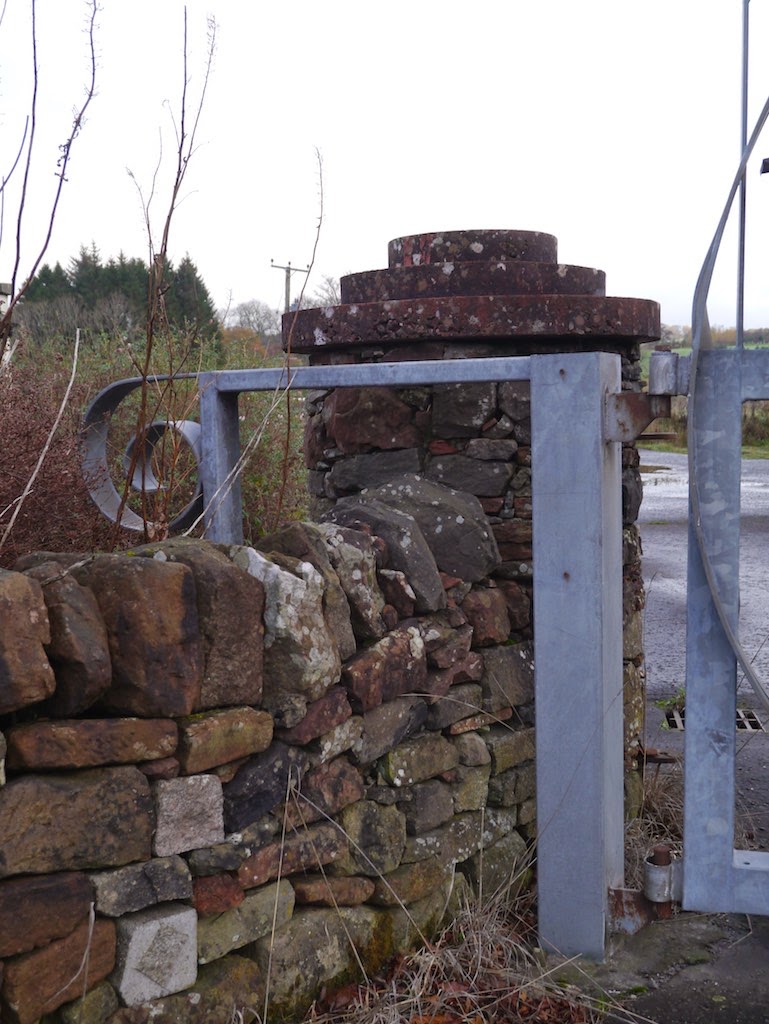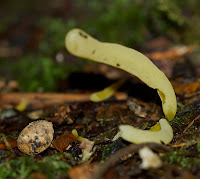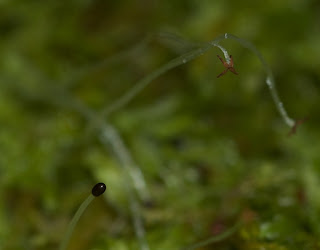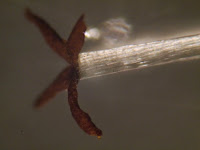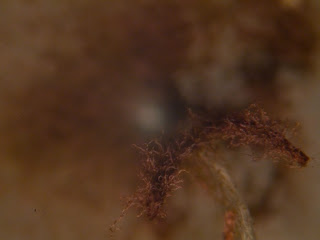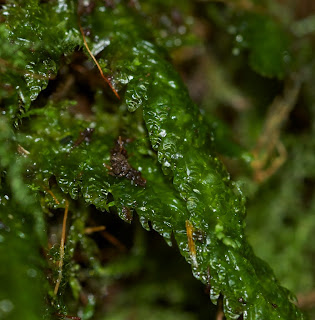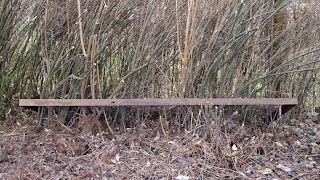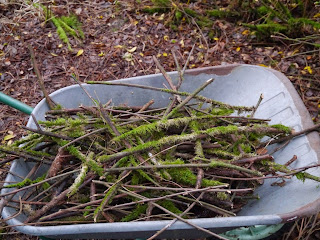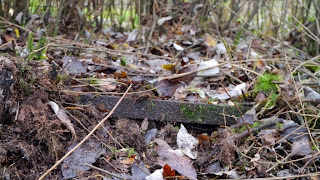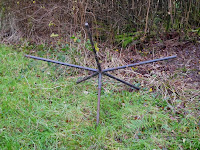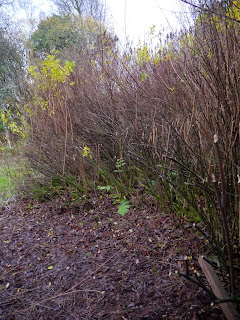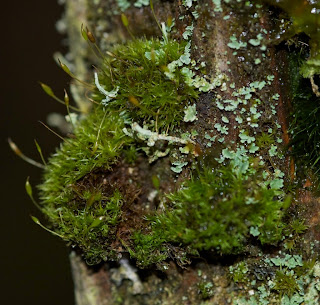During my diggings up of spiraea roots, I found quite a few bluebell bulbs, which I replanted. They have not flowered in previous years in this part of the garden but perhaps giving them a bit of 'breathing space' might encourage them. I hope so.
Just to the left of the hedge pic is today's
favourite bryophytically enhanced fence post.
And further along from that was a rotting log of grey sallow on which is growing today's fungus. I think it might be a tooth fungus but don't quote me on that.
 |
Scrambling among the grey sallows' several trunks is lots of honeysuckle. I noticed it had new green shoots already, even before this all year's leaves have fallen off. The large beech tree up the hill in the wood is bare but the hazels still have some leaves. What can the Woodland Trust have meant about hazel having had an exceptionally early leaf drop this year? That certainly hasn't been the case here, nor in the other parts of Argyll I've been in lately. Last Friday I drove to Inveraray and there were hazels with leaves all the way there and back along Loch Long and Loch Fyne, lots of them.
 |
| Honeysuckle–old leaves and young shoots |





